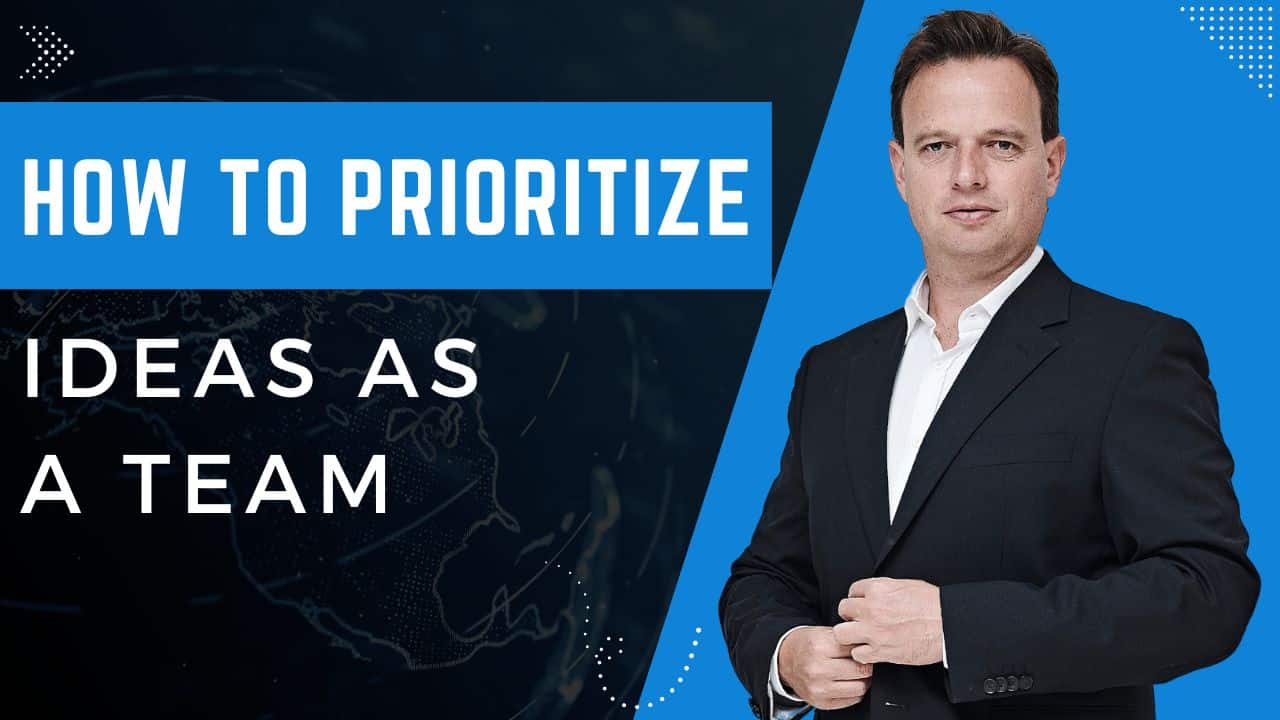Most teams make a huge mistake when prioritizing stuff.
They use opinions rather than data to decide what order to do things.
Normally, the highest-paid person’s opinion.
Every organization has limited resources—time, money, manpower, etc.
A solid process for prioritizing ideas ensures that resources are allocated to the most important and impactful projects or initiatives.
Not all ideas are created equal.
Some ideas align better with your goals, mission, or strategy.
By prioritizing, you focus your efforts on your objectives. Increasing the likelihood of your success.
In today’s article, I share my favourite prioritization process you can easily adapt to any situation.
It will help your team decide what to do first (by merit).
Objective
To quickly get consensus within a team on what should be considered a priority.
Step 1
- Agree on your workshop objectives (i.e., what you want to achieve) and lead your team through a brainstorming process.
- Use a Post-it note for each item.
- The person with the idea must write their own Post-it, increasing ownership over the idea.
Step 2
- Give each idea a rating of 1 to 4 for “Impact” and “Do-ability”.
- When thinking about Impact, answer this question:
- “If we did this, how close would it get us to fulfilling our objectives?”
- 1 = Not close, 4 = Very close
- When thinking about Do-ability, answer this question:
- “How easy would this be to do?”
- 1 = Hard, 4 = Easy
Step 3
- Place each idea on the chart according to their ratings and moderate their positioning relative to each other to arrive at a sensible distribution.

- You then draw the prioritisation sector at the top right of the grid (everything inside should be impactful and easy to do).

- Next, it’s action planning time!
TIP: Draw in the prioritization sector at the end rather than the beginning. A sector drawn at the start will tempt people to rate all items so they fall within the sector!
Step 4
- You then get your team to develop a high-level action plan for the highest priority items.
- Work quickly and try to avoid getting stuck in discussion.
- Make sure actions are assigned to increase ownership.
- Each action should be allocated a date by which it should be completed, along with the person responsible.
- Actions need not be captured in strict sequence. You can always change the order later.
Alternative to ‘Do-ability’
It’s quite possible to use the same process another way by replacing ‘Do-ability’ with ‘Desirability’ (i.e. how compelling is the desire for change?)
If you choose this route, you must distinguish clearly between impact and desirability – they are different.
The danger is to consider them the same thing (i.e. anything with high impact must be desirable, while anything with low impact is not).
This misses the point as Impact reflects the rational side of change, while desirability reflects the emotional and political dimensions.
You can distinguish between them as follows:
- For any change to succeed, there must be a good reason to do it. Typically, this means there must be some favourable impact on something. This deals with the rational side of change.
- However, you fool yourself if you think that a favourable impact alone is sufficient to succeed in making change happen. There are plenty of examples where change doesn’t happen despite the promise of a positive outcome. Typically, this is because people are resistant to change, sceptical or simply ‘too busy’ to get involved. Implementing change where everyone wants to is easier, so let’s use desire as the second criterion. This addresses the emotional and political dimensions of change.
Summary
By using this workshop, I never have to sit around a meeting table for hours with my teams, trying to figure out what to do next.
Instead, it helps everyone quickly agree on who should be doing what to avoid disagreements and arguments before they happen.
In essence, prioritizing is about making strategic choices that maximise the use of resources, mitigate risks, and drive impact toward achieving your team’s goals.
This workshop helps you do precisely that.
Well, that’s it for today.
I hope you enjoyed it.

